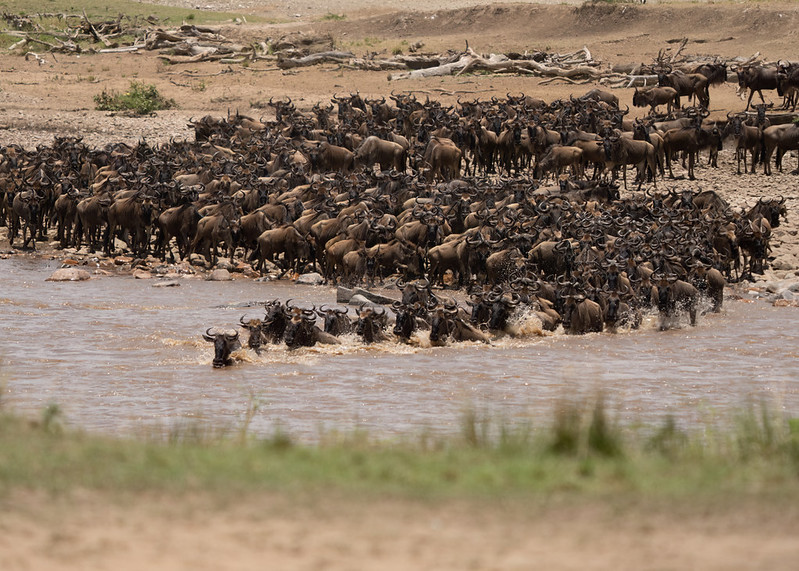
Essential items to bring on a gorilla trekking trip
One of the most popular tourism destinations in the world is gorilla trekking in Rwanda and Uganda. Gorilla trekking is an amazing experience that cannot be missed, whether you are visiting Volcanoes National Park or Bwindi Impenetrable National Park.
It is imperative that you bring the appropriate gorilla trekking equipment to ensure you are as prepared as possible for this trip. The most common error made by hikers is choosing the incorrect attire, which may be extremely uncomfortable and lessen the amazing experience of getting a close-up look at these amazing animals in the wild.
Instead of bulky rolling luggage, go for a lightweight duffel bag; domestic flights within Rwanda and Uganda have a weight limit of 33lbs. This implies that you have to pack carefully.
Hiring a porter to help you on your gorilla trekking adventure is also a smart option. Although they are not required, most hikers believe that they are necessary for a successful trek. Getting your own porter is preferable to sharing one. In Bwindi, they only cost $15 per trip, which is a fantastic way to help the locals.
 This is our tried-and-true packing list for a gorilla trekking trip in Uganda or Rwanda.
This is our tried-and-true packing list for a gorilla trekking trip in Uganda or Rwanda.
Dressing for a Gorilla Trek
Wear lightweight, neutral-colored attire when going on a gorilla trekking expedition. Steer clear of dark blue and black because these hues draw tsetse insects. For early morning and late night game drives, wear layers of clothing and pack a sweater. To protect your skin from the sun and insects, wear long sleeves.
Essentials include a daypack, long socks, insect repellent with DEET, high SPF sunscreen, trekking pants, hiking boots with good tread, waterproof rain jackets, and sunglasses. Long socks are very important; tucking your jeans into your socks can keep fire ants away from your ankles! It is also advised to wear a sunhat, gardening or hiking gloves, and a bandana for brow wiping. When needed, it will also protect your camera from dust.
It is not required to have a waterproof backpack, particularly if you are traveling Rwanda or Uganda in the dry season. However, it’s also a good idea to bring along an additional couple rubbish bags. Pick one and use it to line your pack so that your possessions are shielded from wet.
Purchasing a pair of GoreTex-protected waterproof hiking boots can be a worthwhile investment. You are trekking through tropical rain woods, after all. It’s possible for the ground to be muddy and moist even in dry weather. There aren’t many things worse than freezing, wet feet if you’ve gone trekking a lot. After the hike is over, flip flops are comfortable to wear.
Additionally, avoid the error of holding off on donning your brand-new hiking boots until you get to your destination. Instead, to break in your new boots, take them on several hikes at home. Your feet will appreciate it once more!
Ultimately, bear in mind that finding a gorilla family may require eight or more hours of trekking, so wearing the appropriate clothing is crucial.
Devices and Tools
When you go gorilla trekking, don’t forget to bring your camera. When you trek, make sure it’s safely draped across your body in a waterproof case. Gorillas in the mountains make amazing photos! Carrying spare batteries, memory cards, lens cleaner, extra lenses, and any other equipment that help maintain your camera functioning properly is also a smart idea.
In Rwanda and Uganda, there are regular but brief power outages. You might want to think about packing a portable power supply and a power strip so you can charge many devices at once.
At your lodge, a laptop for taking notes and downloading pictures, as well as a tiny flashlight, may come in handy at night. Just remember to bring a paper diary and pen for taking notes if you prefer the more traditional approach. It’s also advised to bring chargers, adapters, and binoculars if you’re a birdwatcher or just want to see the gorillas up close using a lens separate from your camera.
Sundries
The items on the following list are optional, however they might be useful. Remember that you may be trekking for several hours, so you want to pack as light as possible. The lighter you are, the easier the hike will be and the more you can focus on your objective.
Recall that Uganda joined 40 other African nations in 2019 to outlaw single-use plastic bags in an effort to save the environment. Therefore, avoid putting plastic bags or Ziplocks in your luggage as the airport will confiscate them. On your trek, choose a sustainable substitute for plastic bags to carry your necessities.
- Fruit, energy bars, and granola are examples of snacks. While many lodges will supply this, it’s always a good idea to pack a supply of your preferred brands.
- Trekking poles or a walking stick
- Citronella soap, which serves as a bug deterrent and sunscreen
- Antidiarrheal drugs
- Malaria medication: get the proper prescription from your doctor before leaving.
- Sanitary napkins and tampons are examples of toiletries.
- A compact first aid package
You can make your gorilla trekking experience as enjoyable and comfortable as possible by following this packing list.




